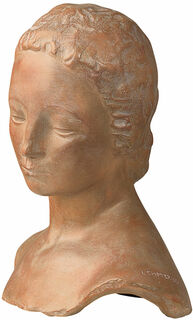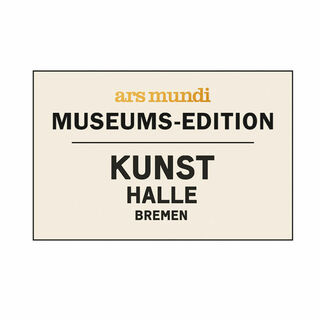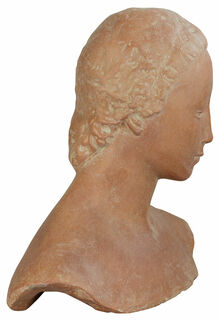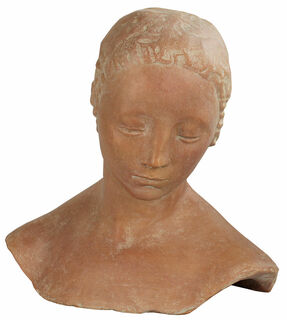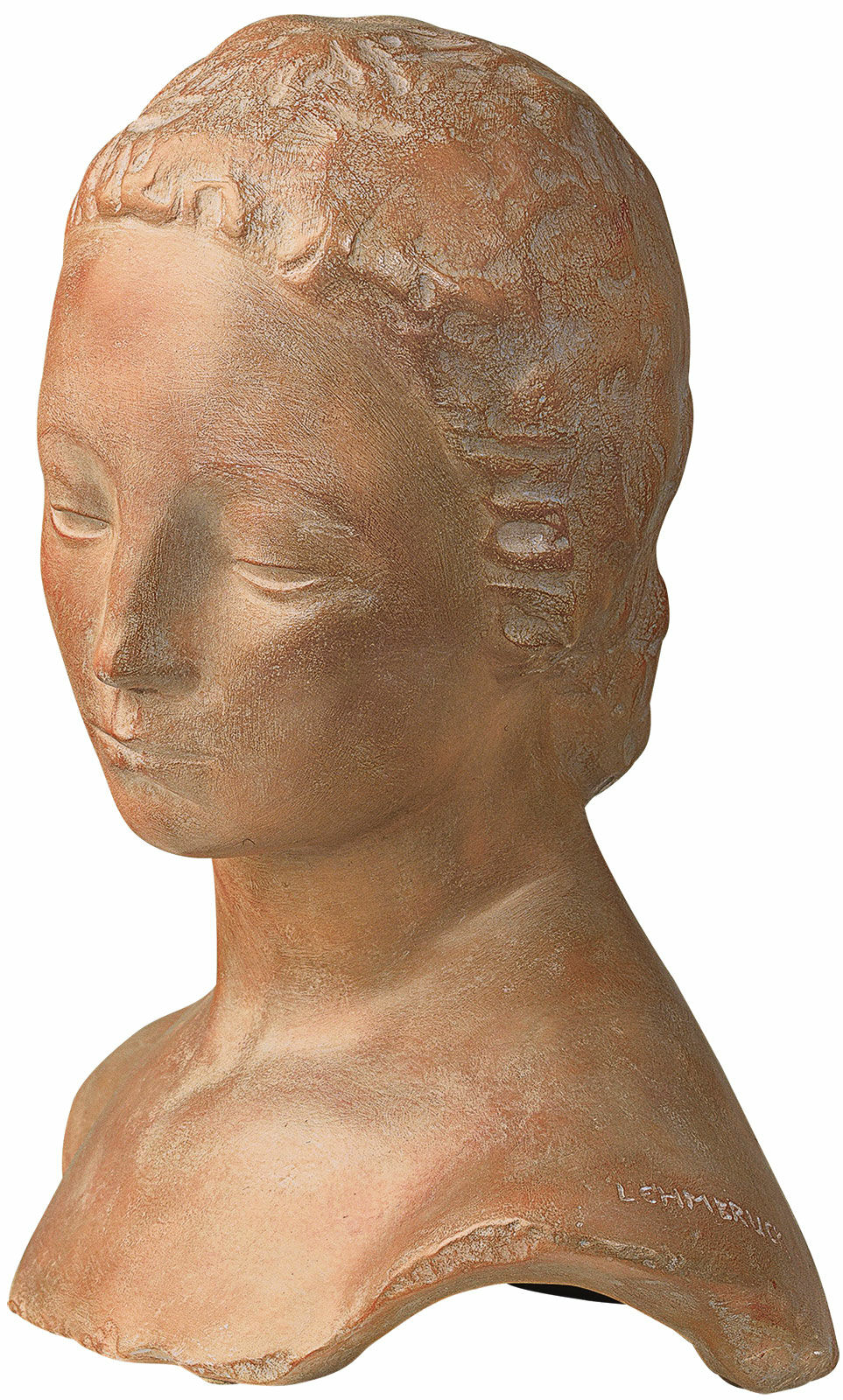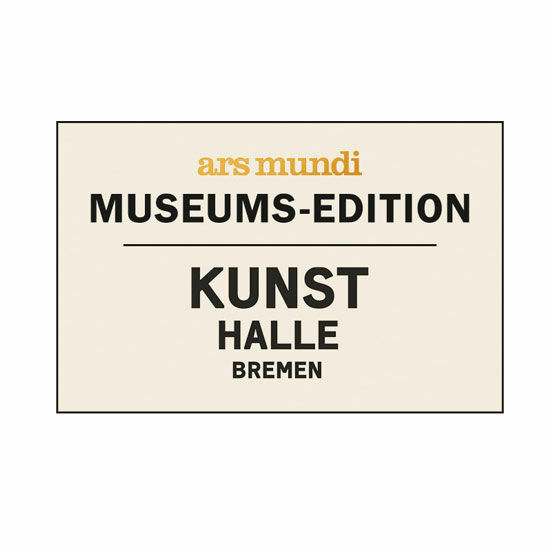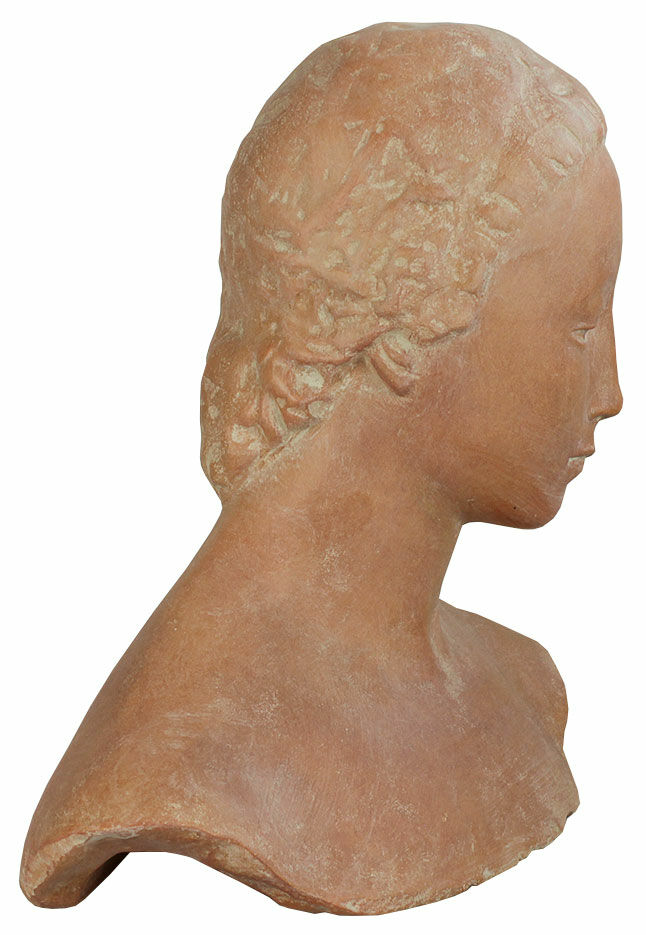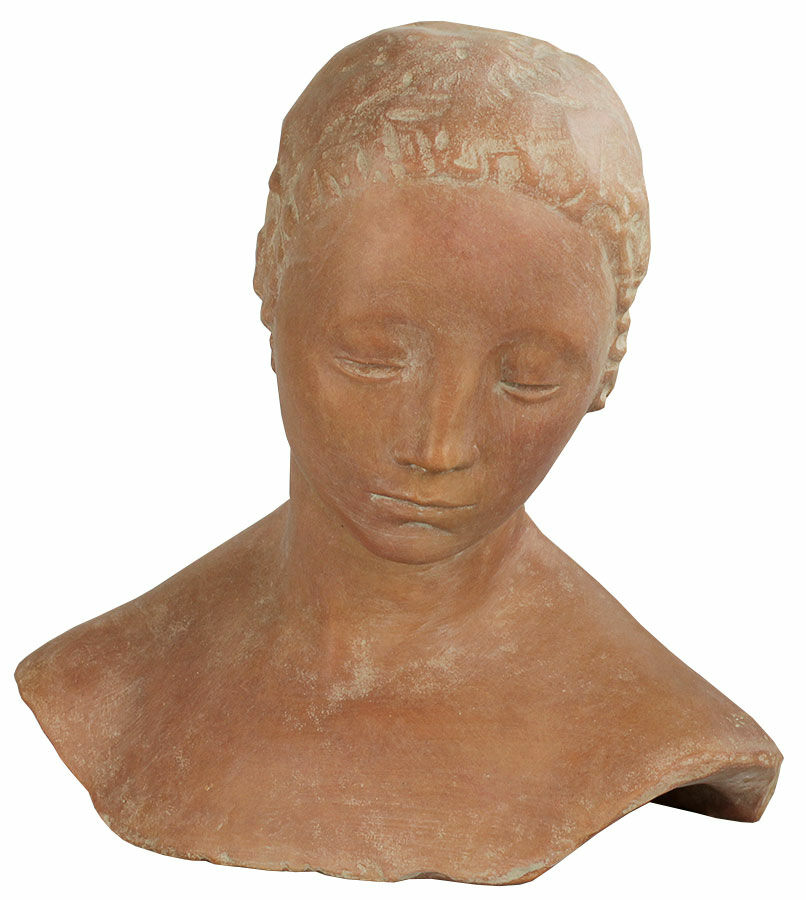Bust "Lowered Female Head" (1910), version in stone casting
Bust "Lowered Female Head" (1910), version in stone casting
Quick info
ars mundi Exclusive Edition | limited, 980 copies | numbered | signature | certificate | cast stone | patinated | reduction | size 23 x 23 x 13 cm (h/w/d) | weight 2.9 kg
Detailed description
Bust "Lowered Female Head" (1910), version in stone casting
Auguste Rodin's work influenced many artists including Lehmbruck. His motif is the human being, often departing from real body proportions to achieve a stronger pictorial expression. Like Rodin, he later concentrated on individual parts of the body. The "Lowered Female Head" is ultimately a part of his "Tall Standing Woman" of 1910, which he modified as a bust by limiting it to the head, neck and shoulders.
Sculpture "Lowered Woman's Head":
Edition in cast stone terracotta patinated. Directly moulded from the original and reduced in size (reduction). Limited edition of 980 copies, individually numbered and with the signature taken from the original. ars mundi Exclusive Edition, published in cooperation with the Kunsthalle Bremen. With numbered certificate of authenticity and limitation. Size 23 x 23 x 13 cm (h/w/d). Weight 2.9 kg.
"Wilhelm Lehmbruck is one of the pioneers of modern sculpture, but he has always remained true to the human figure and fundamental humanity. In my opinion, this manifests itself particularly beautifully in the 'Lowered Woman's Head' from 1910. The sculptor is closely associated with the Kunsthalle Bremen, partly because of the then director Siegfried Salzmann, who previously was the director of the Lehmbruck Museum in Duisburg." (Prof. Dr Christoph Grunenberg, Director of the Kunsthalle Bremen)
Customer reviews
About Wilhelm Lehmbruck
1881-1919
Together with Ernst Barlach and Käthe Kollwitz, Wilhelm Lehmbruck is one of the most important German sculptors of the early 20th century.
Fortunate circumstances led the son of a miner to an arts and crafts school and finally to the Düsseldorf Art Academy in 1901, where he became a master-class student of Karl Janssen.
In 1904, the first major Rodin exhibition in Germany left a lasting impression on the student. His artistic environment had a decisive influence on Lehmbruck's development. In Paris in 1910, he met Matisse, Archipenko, Brancusi and Modigliani, who encouraged his path towards expressionist sculpture.
Sculptural representation of person's head and shoulders.
Graphic or sculpture edition that was initiated by ars mundi and is available only at ars mundi or at distribution partners licensed by ars mundi.
Artistic movement that replaced Impressionism in the early 20th century.
Expressionism is the German form of the art revolution in painting, graphic art and sculpture, which found its precursor in the works of Paul Cézanne, Vincent van Gogh and Paul Gauguin in the late 19th century. The Expressionists attempted to advance to the primal elements of painting. With vibrant, unbroken colours in large areas and with the emphasis on the line and the resulting targeted suggestive expressiveness, they fought against the artistic taste established by the bourgeoisie.
The most important representatives of Expressionism were the founders of "Die Brücke" (The Bridge): Ernst Ludwig Kirchner, Erich Heckel, Karl Schmidt-Rottluff, Max Pechstein, Otto Mueller and Franz Marc, August Macke and others.
Masters of Viennese Expressionism are Egon Schiele and Oskar Kokoschka. Among the sculptors, Ernst Barlach is the most famous.
Fauvism is the French form of Expressionism.
Collective term for all casting processes that ars mundi carries out with the help of specialised art foundries.
Stone casting
Similar to artificial marble, with the difference that the substitute stone in powder form is used instead of marble powder.
Bonded Bronze (Cold-Cast-Bronze)
Bronze powder is polymer-bonded. Special polishing and patination techniques give the surface of the casting an appearance similar to the bronze.
Imitation Wood
In order to guarantee absolute fidelity to the original, an artificially manufactured imitation wood is used as a base material that features typical wood characteristics: density, workability, colour and surface structure.
Ceramic Mould Casting
Ceramic mould casting usually requires the use of casting clay, which is then fired and optionally glazed. Instead of the usual rubber moulds, plaster moulds are often used in ceramic casting and porcelain production.
Cast Bronze (Lost-Wax Casting)
For the cast bronze, the thousand-year-old lost-wax technique is used. It's the best, but also the most complex method of producing sculptures.
Term for an art object (sculpture, installation), which is produced in multiple copies in a limited and numbered edition according to the artist‘s will.
Artist's multiples have been called the most accessible and affordable art on the market.
A plastic work of sculptural art made of wood, stone, ivory, bronze or other metals.
While sculptures from wood, ivory or stone are made directly from the block of material, in bronze casting a working model is prepared at first. Usually, it is made of clay or other easily mouldable materials.
The prime time of sculpture after the Greek and Roman antiquity was the Renaissance. Impressionism gave a new impulse to the sculptural arts. Contemporary artists such as Jorg Immendorf, Andora, and Markus Lupertz also enriched sculptures with outstanding works.

